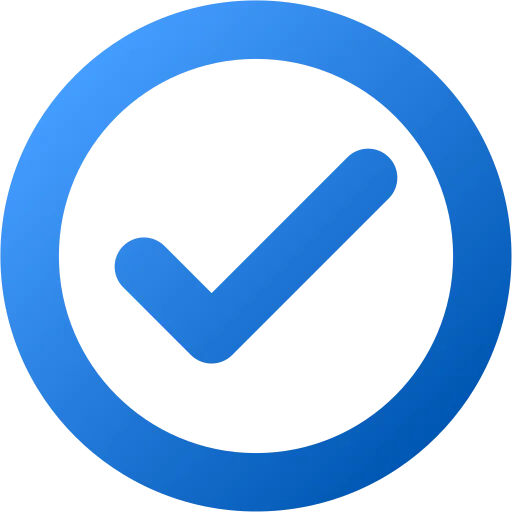
Have you ever thought of sinking your face and die during a very serious conversation, just because of a few people using hefty terms that you don’t comprehend? Naturally, we all have been through that at least once in our life when we don’t understand the demand generation terminologies used by others. We simply act along to understand and pass an innocent smile to overcome the situation until we manage to google it out as early as possible. To save you from such embarrassing moments, we have collected a few most used Demand Generation terminologies along with their meaning.
Must Read: 9 Demand Generation Books Every Marketing Expert Should Read
1. A/B Testing:
Table of Contents
- 1 1. A/B Testing:
- 2 2. CAC: (Customer Acquisition Cost)
- 3 3. CCR: Customer Churn Rate
- 4 4. CLTV: Customer Lifetime Value
- 5 5. CMS: Content Management System
- 6 6. COS: Content Optimization System
- 7 7. CRM: Customer Relationship Management
- 8 8. CRO: Conversion Rate Optimization
- 9 9. CPA: Cost Per Acquisition or Cost Per Action
- 10 10. L2RM: Lead to Revenue Management
- 11 11. LTV:CAC: Lifetime Value to Customer Acquisition Cost
- 12 12. MAP: Marketing Automation Platform
- 13 13. PPC: Pay-per-Click
- 14 14. SaaS: Software as a Service
- 15 15. UX: User Experience
- 16 16. ToFu: Top of the Funnel
- 17 17. MoFu: Middle of the Funnel
- 18 18. BoFu: Bottom of the Funnel
- 19 19. BANT: Budget, Authority, Need and Time
- 20 20. Lifecycle Stage
- 21 21. Conversion Rate
- 22 22. Lead to Customer Rate
- 23 23. CAN-SPAM
- 24 24. CASL: Canada’s Anti-spam Law
- 25 25. CPA: Cost-per-Lead
- 26 26. CPR: Cost-per-Resource
A/B Testing or as a few call it Split Testing juxtapose two types of tests to compare which one performs better. To give an example, you can see which subject line goes better with your emails and gives estimated results by sending the same email with two different subject lines and then picking up the better line on the basis of the responses. There are a few mail sending programs to help you with this.
Must Read: Do’s and Don’ts of Email Marketing
2. CAC: (Customer Acquisition Cost)
As the term itself hints the meaning, it tells how much expensive it would be to let a new client join you. It is, in fact, the sign of value or cost of your client. Having a clarity of the expenses you will have to incur for the client along with marketing and overall spends will give an idea of the profitability of the deal and help your investors to make decisions too, in case you are planning to raise money through a public fund.
3. CCR: Customer Churn Rate
It is an equation used to know the customer maintenance and value. The equation goes like this (Customer at the beginning of measurement period) – ( customer at the end of measurement period) / ( customers at the beginning of measurement period)
Must Read: Demand generation blackbook | 8 hacks to skyrocket your B2B business
4. CLTV: Customer Lifetime Value
Customer Lifetime value is the value of your customer for their entire lifetime spend with your business. With the help of these metrics, you can determine the profitability of your customers for your business in the coming years.
5. CMS: Content Management System
Helping you to manage digital content, CMS is almost self-explanatory. As the name suggests, the Content management system is a set of programs or/and software application that helps you manage the content online with ease.
Must Read: Demand generation ideas from startups
6. COS: Content Optimization System
Any platform that lets you organize all your marketing tools under one roof and makes it even simpler to execute your marketing campaigns are known as COS. HubSpot being one of the most commonly used platforms is a good example of COS.
7. CRM: Customer Relationship Management
CRM is used as a term to define all the techniques and strategies that businesses use to manage their customer relationship. This terminology is also used for the software that is used by the businesses to manage the customer relationship and drive sales growth. You might have come across this term a lot as CRM is also one of the commonly used demand generation terminologies.
Must Read: Does your business needs demand generation expert or agency? Find out
8. CRO: Conversion Rate Optimization
CRO is a terminology used when using various testing and key optimization principles you improve your site conversion rate. It also utilizes the process of creating an experience for your visitors to convert them into customers.
9. CPA: Cost Per Acquisition or Cost Per Action
Cost Per Action is when advertisers pay only for a specified acquisition. It is basically an online advertising pricing model. These demand generation terminologies are also used as a metrics to measure how much you pay to attain any conversion.
Must Read: How to maximize social media for demand generation
10. L2RM: Lead to Revenue Management
Lead to Revenue Management is a customer engagement model. It is used to define all the metrics, processes and goals that are set to engage and capture new customers and to grow overall revenue.
11. LTV:CAC: Lifetime Value to Customer Acquisition Cost
Giving you a high-value insight into what you require to gain a customer, LTV: CAC is one of the most important metrics used by the SaaS companies. It also explains a lot about the returns that you can expect over the lifetime of your engagement with the customers. This helps you understand and determine whether the acquisition cost is utilized well or not.
Must Read: 15 demand generation FAQ’s to make your marketing better
12. MAP: Marketing Automation Platform
Marketing Automation Platforms are platforms used by the marketers to automate the communication process between them and the customers. They can automate emails, social media posts as well as lead distribution/routine.
13. PPC: Pay-per-Click
PPC or pay-per-click is an internet marketing model used by advertisers. In this model, advertisers pay a certain cost per click on their ads. In other terms, you only pay when someone clicks on your ads and becomes a visitor.
Must Read: Did you know – Repeating demand generation activities drives 10x results
14. SaaS: Software as a Service
SaaS is a term used to refer to the companies which offer services via software that can be accessed online or via a downloaded version. HubSpot, for instance, is SaaS company.
15. UX: User Experience
User Experience, as the name suggests defines itself. The experience that any user gets while using a particular product or services or the website is known as User Experience. UX also highlights the emotional aspect of the experience that users have while using the website or services.
Must Read: Guide to choosing right demand generation partner for your business needs
16. ToFu: Top of the Funnel
In a marketing funnel, the topmost portion that focuses on B2B lead generation and targeting the audience is known as ToFu. Generally used by Lead Generation companies and marketers, ToFu is a very commonly used term.
17. MoFu: Middle of the Funnel
MoFu is the middle part of the marketing funnel where generally the nurturing and segregation of MQLs to SQLs happen.
Must Read: MQL to SQL conversion rate
18. BoFu: Bottom of the Funnel
BoFu or bottom of the funnel is the bottom part of the marketing funnel where you utilize your asset and persuade the leads. This is generally a part used by the sales team.
19. BANT: Budget, Authority, Need and Time
BANT is a widely-used method for qualifying B2B sales leads. The basic idea behind BANT is to identify customers first based on their Budget then Authority, Need and Time.
20. Lifecycle Stage
Lifecycle stages are the various stages in the sales cycle used to organize your contacts based on their place in the specific stage. For example, whether your contact is a quality lead or a subscriber or a customer.
21. Conversion Rate
A conversion rate is the metrics used by the marketers to determine the number of visitors who complete a desired goal out of the total number of visitors. Basically, this conversion rate is the rate of visitors converting into a lead among the total number of visitors on the website.
Must Read: Demand generation and Inbound marketing: The new couple in town
22. Lead to Customer Rate
Lead to customer rate is the ratio used to determine the number of leads converting into paying customers. It lets you determine whether your sales process is working or not.
23. CAN-SPAM
If you use email marketing in your business then this is one of the most important demand generation terminologies that you should probably keep in mind. CAN-SPAM is an act that is set to determine who can send you commercial emails. According to this law, it gives you the authority to stop anyone to send you emails and tough penalties are set in case of violation.
24. CASL: Canada’s Anti-spam Law
This demand generation terminology is widely used by the telemarketing companies. CASL is one of the most strict and toughest laws of its kind. According to this law, you cannot send an email to anyone in Canada without his/her content. If you deal with email marketing or telemarketing in which you send emails, you need to ask for their consent before mailing them.
Must Read: 40+ demand generation blogs you should follow now
25. CPA: Cost-per-Lead
Cost-per-lead is an online advertising pricing model according to which a marketer pays the fee only when a visitor not only click on the advertisement but also fill ups the form or complete the desired goal to become a lead.
26. CPR: Cost-per-Resource
CPR or Cost-per-Resource is a pricing model that is used by the marketers to pay a specific amount of cost for the resource provided by any company. For example, OnlyB2B provides CPR pricing system to their clients. In it, they provide you a team of experts who give you specific services like lead generation through telecalling. CPR is comparatively is a better pricing system as it gives you a scope of gaining more leads.

Vikas Bhatt is the Co-Founder of ONLY B2B, a premium B2B lead generation company that specializes in helping businesses achieve their growth objectives through targeted marketing & sales campaigns. With 10+ years of experience in the industry, Vikas has a deep understanding of the challenges faced by businesses today and has developed a unique approach to lead generation that has helped clients across a range of industries around the globe. As a thought leader in the B2B marketing community, ONLY B2B specializes in demand generation, content syndication, database services and more.

.webp)
